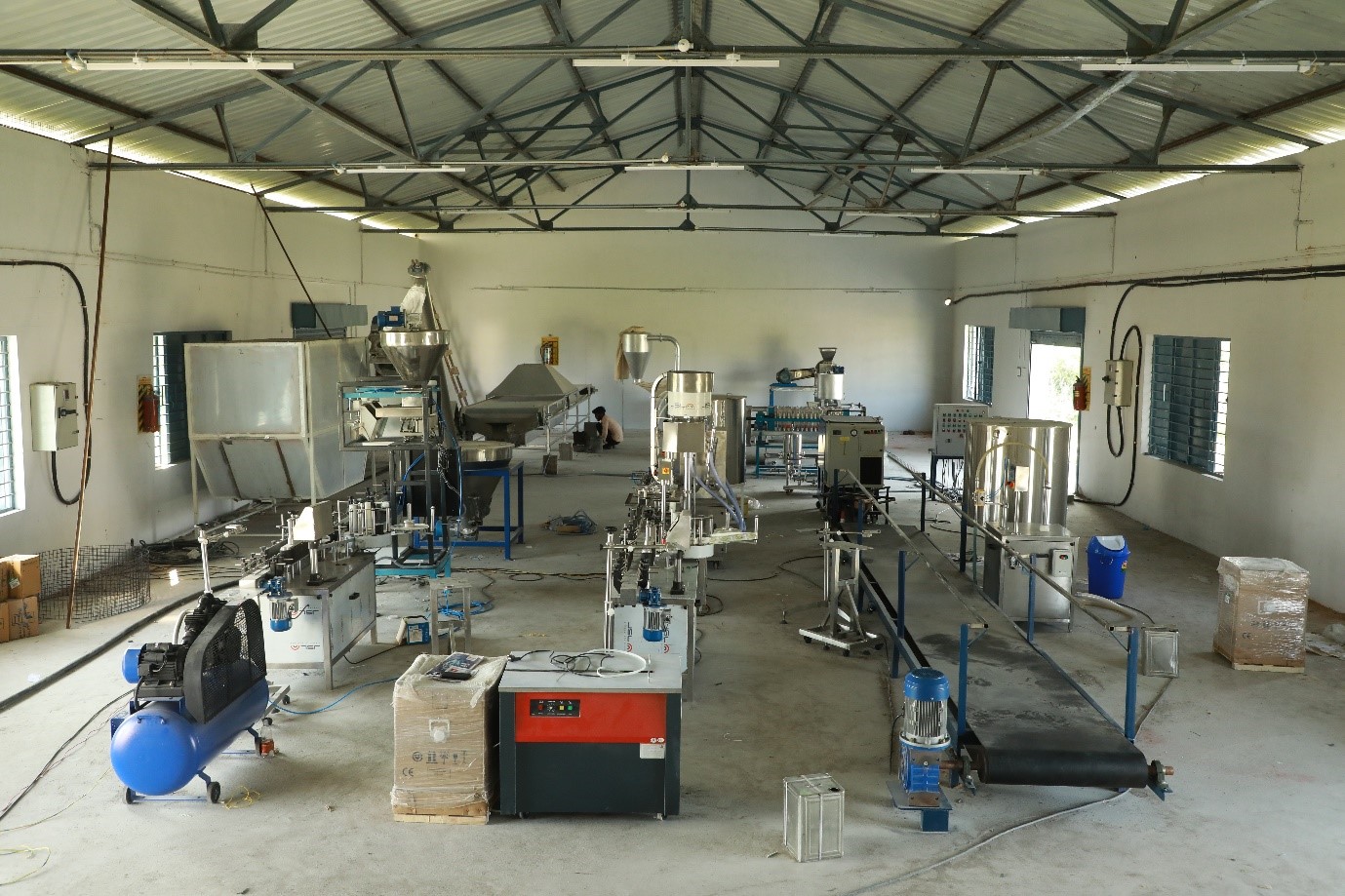
VIRGIN COCONUT OIL EXTRACTION PLANT (10000 Nuts/Day)
Description :
Virgin coconut oil (VCO) is a popular and highly sought-after natural oil known for its numerous health benefits and versatile applications. The production of VCO involves several processing steps, and various machineries play a crucial role in achieving high-quality oil.
PROCESS
1. Coconut Dehusking Machine :
This machine is used to remove the husk or outer shell of the coconut. It typically consists of a rotating drum or a spiked roller that applies pressure to crack the coconut shell, making it easier to remove.
2. Coconut Deshelling Machine :
Once the husk is removed, the coconut deshelling machine is employed to separate the coconut meat from the hard shell. It usually utilizes a mechanical or manual process to extract the coconut meat efficiently.
3. Testa Removing Machine :
The Testa or brown outer skin of the coconut is often removed to produce a more refined VCO. A Testa removing machine is used to peel off or scrape the Testa from the coconut meat, improving the appearance and quality of the final oil
4. Coconut Grating Machine :
This machine is designed to grate or shred the coconut meat into smaller particles. It can be equipped with sharp blades or abrasive surfaces to break down the coconut meat effectively.
5. Coconut Milk Extraction Machine :
After grating, the coconut meat is subjected to a milk extraction process. This machine helps extract the coconut milk from the grated coconut. It may use various techniques such as pressing, squeezing, or centrifugation to separate the milk from the pulp.
6. Coconut Milk Fermentation Tank: :
The extracted coconut milk is often subjected to fermentation, which enhances the flavor and aroma of the final VCO.
A fermentation tank provides a controlled environment for the natural fermentation process to take place, typically at specific temperatures and durations.
7. Virgin Coconut Oil Extraction Machine :
This machine is used to separate the oil from the fermented coconut milk.
There are different methods for VCO extraction, including traditional methods such as heating and centrifugation, as well as modern methods like cold-pressing or expeller pressing. The extraction machine ensures efficient separation of oil from the coconut milk.
8. Centrifuge :
After extraction, a centrifuge may be used to further separate the VCO from any remaining solids or water
The centrifuge spins the oil at high speeds, causing the denser components to settle at the bottom, allowing for the separation of the pure oil.
9. Coconut Oil Filtration System :
Once the oil is extracted, it needs to undergo filtration to remove impurities and sediment.
A filtration system, typically consisting of filters or filter presses, is employed to achieve clarity and purity in the VCO.
10. Virgin Coconut Oil Cooler :
To cool the freshly extracted VCO and maintain its quality, a cooler is used. The cooler helps reduce the temperature of the oil quickly, preventing any degradation or spoilage.
11. Vacuum Dryer :
After cooling, the VCO may undergo a drying process to remove any remaining moisture.
A vacuum dryer utilizes low-pressure and gentle heating to evaporate the moisture without damaging the oil, resulting in a stable and longerlasting product.
12. Coconut Oil Storage Tanks :
Finally, the processed VCO is stored in clean and foodgrade storage tanks. These tanks help preserve the quality of the oil by protecting it from air, light, and moisture.
| Production Capacity | 10000 Coconuts/Day |
| Power | 220 Hp |
| Area required | 200 x 40 Feet |


